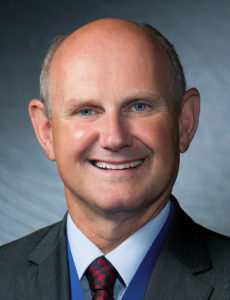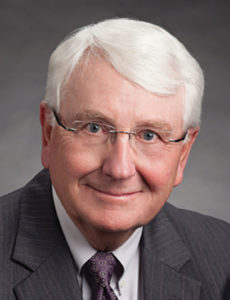 Thirty-five years ago, leaders from the American Society of Anesthesiologists (ASA) and corporations that provided key technologies and pharmaceuticals for anesthesia practices joined forces through the establishment of the Anesthesia Patient Safety Foundation (APSF) to improve the safety of patients receiving anesthesia care. Their collaboration was novel and has led to a sustained and remarkably successful focus on anesthesia patient safety.
Thirty-five years ago, leaders from the American Society of Anesthesiologists (ASA) and corporations that provided key technologies and pharmaceuticals for anesthesia practices joined forces through the establishment of the Anesthesia Patient Safety Foundation (APSF) to improve the safety of patients receiving anesthesia care. Their collaboration was novel and has led to a sustained and remarkably successful focus on anesthesia patient safety.
Measurement of improvement is challenging as many perioperative factors play important roles. However, by almost any measure it is clear that intraoperative safety of patients has increased dramatically during the 35-year span.
In retrospect, what key factors have contributed to this success?
Trust and a Shared Value
The ASA, through the APSF, was one of the first American medical professional organizations to integrate corporate leaders onto medical foundation boards. Whatever concerns there were about potential conflicts of interest were negated by the shared value of patient safety. The trust between and amongst the anesthesiology and corporate founding members of APSF proved crucial to the foundation’s initial successful impact on anesthesia patient safety. These pioneering leaders were able to bring competing corporations and their knowledge and technologies together in the interest of improving patient safety, with the foundation’s anesthesia professionals providing ideas and corporations developing the technologic and pharmacologic advances. It is gratifying that this focused medical-corporate partnership, based on trust and a shared value of patient safety, continues today. The partnership has expanded and now includes input from the full scope of anesthesia professions, leaders from perioperative organizations such as the Association of PeriOperative Registered Nurses and the American Society of PeriAnesthetic Nurses, surgical organizations, risk management companies, and regulatory agencies.
Creation and Implementation of New Patient Safety Knowledge

Ellison C. (“Jeep”) Pierce, Jr., MD, founding APSF president, stands at APSF booth announcing the APSF research award established in his honor.
APSF founders understood that anesthesia care at the time was being delivered with a paucity of knowledge related to patient safety and was subject to individual provider variations in skills and knowledge. The founders created an initial mission to foster investigations that provided a better understanding of preventable anesthetic injuries. The ASA, corporate supporters, and individuals donated the financial support to develop the world’s first dedicated anesthesia patient safety grant program. A very unique characteristic of this program was the availability of its support to non-anesthesia investigators (e.g., patient safety and organizational scientists, sociologists, and others). Today, this program continues and has awarded more than $13.5 million to 145 principal investigators. The results of the studies by these investigators have played outsized roles in our understanding of anesthesia patient safety and led to dramatic improvements in patient outcomes.
Dissemination of Patient Safety Information and Ideas
APSF was specifically tasked from the start to promote national and international communication of information and ideas about the causes and prevention of anesthetic injuries. The APSF Newsletter has been one of the most widely distributed and read anesthesia publications worldwide. In the past few years, its efforts to improve the international dissemination of anesthesia patient safety information have expanded. It is now published in six languages and has readers from every country in the world. More than 1.5 million pages of its content were viewed this past year. The Newsletter provides current information on the APSF’s priority patient safety issues as well as other safety topics that are important to anesthesia professionals globally.
Laser Focus on Patient Safety
By design, APSF targets a single goal of improved anesthesia patient safety. The core principles of the APSF have changed little over its first 35 years. This is a remarkable strength of the foundation, resulting in a consistent as well as persistent focus on patient safety. As a small foundation, it can be nimble and flexible in addressing priority issues. If one approach does not work, others can be taken and their success rapidly assessed. In addition, the foundation is apolitical, allowing it to avoid distracting controversies.
Indeed, the first 35 years have brought great success, but much more is needed to ensure that patients who undergo anesthesia care are safe throughout the full extent of their perioperative care. For example, we need to direct efforts towards:
- The well-being of colleagues who provide perioperative care as it is increasingly clear that impaired anesthesia and other health care professionals negatively impact patient safety. To that end, the APSF has modified its vision statement to be inclusive of all health care professionals as well as patients. It now reads, “that no one shall be harmed by anesthesia care.”
- Research and implementation of effective clinical improvement programs that are directed towards patient safety during the entire span of perioperative care. The APSF is teaming with foundations and organizations within anesthesia such as the Foundation for Anesthesia Education and Research and the World Federation of Societies of Anaesthesiologists as well as those not typically considered within the anesthesia realm such as the Patient Safety Movement Foundation, American College of Surgeons, and the Institute for Safe Medication.
- Initiatives to disseminate patient safety information more broadly. The APSF Newsletter is expanding to include a new online component and additional translations are being considered. The Newsletter currently is available in English, Japanese, Chinese, Portuguese, Spanish, and French. APSF’s social media initiatives are growing to allow the foundation to better reach the newest generation of our colleagues around the world. Facebook, Twitter, Instagram, and podcasts are now part of the APSF’s social media family and are growing in popularity.
The Future and Core Principles
While it is not possible to project what the next five, and certainly 35 years will bring, APSF has long-standing core principles that will focus its patient safety efforts far into the future. While much in the foundation may change over time, it is these core principles that will sustain its positive contributions to anesthesia patient safety. These principals are
- Identifying safety initiatives and creating recommendations to implement directly and with partner organizations
- Being a leading voice for anesthesia patient safety worldwide
- Supporting and advancing anesthesia patient safety culture, knowledge, and learning.
We extend our sincere thanks to the APSF’s founders and their initial vision “that no patient shall be harmed by anesthesia.” Their contributions to the specialty of anesthesiology and all our patients deserve our highest praise, and we hope that we can emulate their achievements far into the future.
Mark Warner, MD, is currently president of the APSF and the Annenberg Professor and former chair of Anesthesiology, Mayo Clinic, Rochester, MN.
Robert Stoelting, MD, is immediate past president of the APSF and emeritus professor and chair of Anesthesiology, Indiana University, Indianapolis, IN
The authors have no conflicts of interest.


 Issue PDF
Issue PDF
